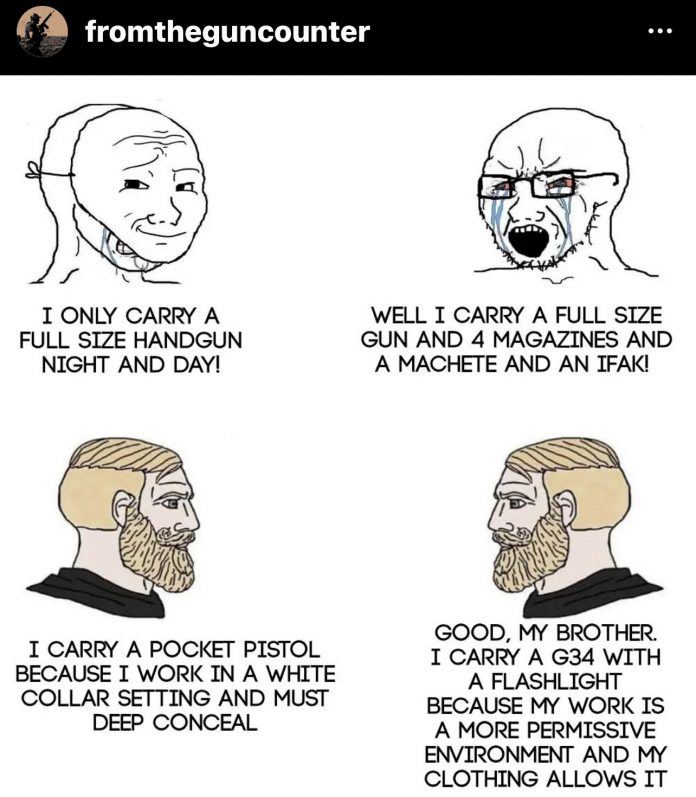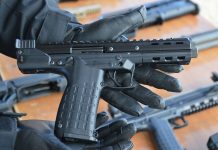
But Mr. Dicken’s act, though heroic, was also a statistical unicorn. An examination of 433 active shooter attacks in the United States between 2000 and 2021 showed that only 22 ended with a bystander shooting an attacker, according to data from the Advanced Law Enforcement Rapid Response Training Center at Texas State University. In 10 of those cases, the armed bystander was a security guard or off-duty law enforcement officer. In other encounters, civilians attempting to step in and stop an assailant were themselves shot to death by the police. – New York Times
Yes… and how many of those happened in “Gun Free Zones” where people were supposed to be disarmed, either by policy or force of law? That is part of your “statistical unicorn” too, NYT.
Allow me to answer that.
80% to 90%
Using the GunFacts.info MPS Database, which contains the 71 MPS (using the FBI definition) documented in the U.S. between 1988 and August 4, 2019, more than 85 percent of MPS have been perpetrated in gun-free zones. – USCCA
I know USCCA isn’t the most unbiased voice on this issue, so let’s look and see if there are factors in favor of Gun Free Zones.
We found no qualifying studies showing inconclusive evidence about gun-free zones. – RAND
There is debate over the extent to which perpetrators target gun-free zones. One analysis of 133 mass shooting events between 2009 and 2016 found that 10 percent of incidents occurred in designated gun-free zones (Everytown for Gun Safety Support Fund, 2017b). However, another analysis focused on mass public shootings between 1998 and 2018 and reported that 97.8 percent of incidents took place in gun-free zones (Crime Prevention Research Center, 2018a). While the discrepancy in these estimates is partially due to differences in how mass shootings are defined—the latter study restricts analysis to mass public shootings—there also appears to be some disagreement about how gun-free zones are classified. – RAND
So the study that restricted itself to public incidents, the thing that GFZ’s allegedly influence, found that 97.8% of incidents happened where the policy was in place to stop that from happening.
“It is exceedingly rare, the exception rather than the rule,” Adam Skaggs, chief counsel and policy director at the Giffords Law Center to Prevent Gun Violence, said of scenarios like the one in Indiana. “The reality is that more people carrying guns means more conflicts escalating into deadly violence and more people being shot and killed.”
That’s not born out in any statistical evidence, as states have gone to shall issue or constitutional carry. Restricted regions are not curbing violence, 88.8% of federal gun charges are against already prohibited persons. The prohibition fails overwhelmingly, but when we see prohibitions removed we don’t see crime spike. Conclusion, the criminals were always going to crime and the responsible people were always going to act responsibly. The rules about magazine capacity or Pistol Free Zones were a non-influential factor.
So let’s use those 433 events and take the 22 that were stopped out. Leaving us 411, 94.9% of incidents.
If we take the most optimistic number, that 80% happen in GFZ’s by policy or law, it means there was no legal or property permitted way to stop the shooter in 346 of those 411 incidents. The property prevented ‘good guys’ with guns from being on premises because any token ‘good guy’ chose to respect the property right, despite in increase in their risk.
If we take the CPRC number than it is highly likely that every single one of those incidents took place where protective carry was prohibited by law or by the property, making the only armed persons on premise those who ignored the law for good or ill. This greatly reduces the likelihood that a defender and an attacker will come into contact as defenders will, with much greater frequency, respect the property rights or gun free zone law. The attacker, for obvious reasons, does not give a damn. It works in their favor.
What I expect after Greenwood is that more concealed carriers will disregard posted GFZs, even legally penalizing ones, in favor of their safety since the majority of the places very poorly enforce the policy and provide no staffed means of safeguarding the visitors in place of allowing them to carry.



